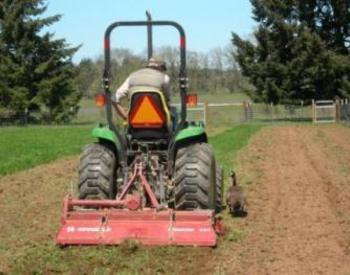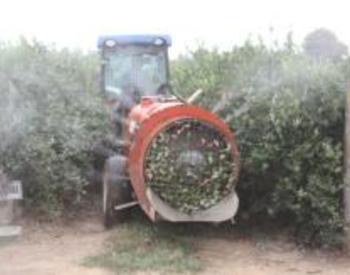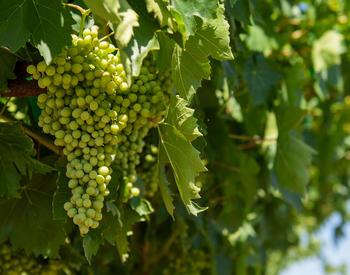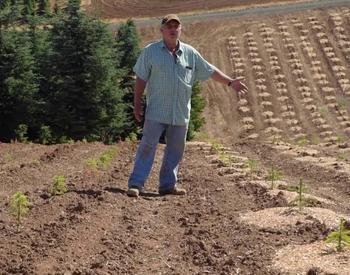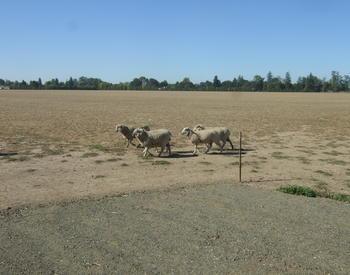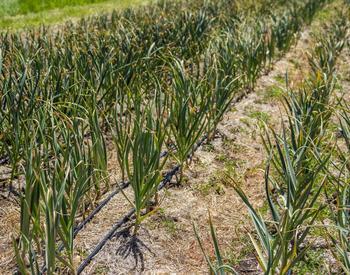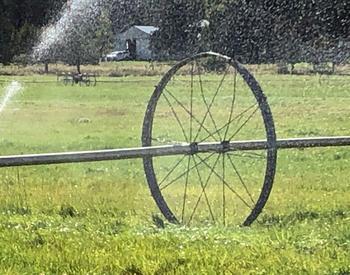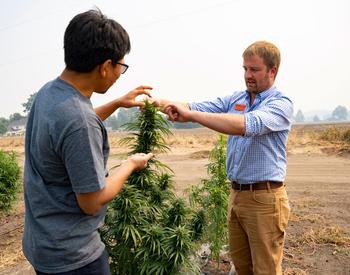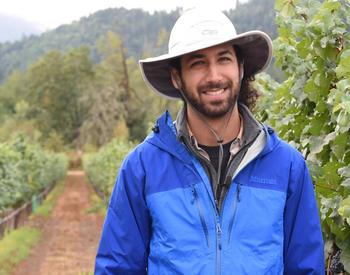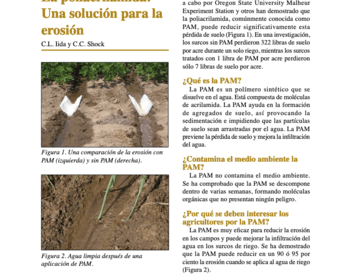Irrigation can be an important part of water and drought management for small farms on the Oregon Coast. There are a lot of decisions to consider when optimizing your irrigation system:
- What type of system makes the most sense for the plants you’re growing?
- How do you set it up?
- When should you start irrigating?
- How much should you irrigate?
In this article, we will address the first key question: What type of irrigation system makes the most sense for my farm?
Three main types of irrigation systems
The system that is best for your farming operation depends on many factors including your irrigation goals, the crops you’re producing, ease of use, and your budget for setup, operation and maintenance.
Surface irrigation
Surface irrigation types include basins, boarders and furrows. The typethat you choose will depend on the topography, soil texture and crops to be grown on your farm. Surface irrigation is generally used in fields with moderate slopes. It requires lower pressure than sprinkler irrigation and is less expensive to operate.
Surface irrigation tends to be the most labor intensive and the least water efficient option for irrigation. However, it is still one of the most commonly used irrigation types on farms in the U.S. The National Resources Conservation Service has a comprehensive guide on surface irrigation design.
Sprinkler irrigation
Sprinkler irrigation systems include single-sprinkler, lateral-based, solid-set, moved lateral and moving lateral systems. Sprinkler irrigation systems provide more control and higher efficiency than surface irrigation and come in a variety of types appropriate for different cropping systems.
-
Single-sprinkler systems use only one sprinkler that is moved periodically or automatically to irrigate an entire area (such as a big gun traveler irrigation system). This system is generally used to irrigate irregularly shaped land areas.
-
Lateral-based sprinkler systems use multiple sprinklers placed along a pipe called a lateral. The basic components are the mainline and one or more laterals. The mainline consists of a pipe network that carries water from the water source to the laterals, where the sprinklers are located.
-
A solid-set system consists of laterals placed permanently in one location in the field and generally installed under the soil surface. Solid-set systems are commonly used on lawns, golf courses and some agricultural applications.
-
When these laterals are moved to multiple locations, they are called moved lateral systems (such as wheel lines and hand lines). When they are moved using automated systems, they are called moving lateral systems (such as center pivots, lateral or linear move systems).
Find a more in-depth discussion of sprinkler irrigation types in a North Dakota State University Extension publication on Selecting a Sprinkler Irrigation System.
Microirrigation systems
Microirrigation systems consist of laterals containing emitters (drip or trickle irrigation) or microsprinklers, or laterals with continuous outflow along their lengths (soaker hoses). The purpose of microirrigation is to irrigate individual plants or groups of plants rather than the entire soil surface. Microirrigation systems are usually permanently installed and can be expensive. Maintenance requirements can be high in places where water requires filtration.
Microirrigation is a common choice for many farmers growing vegetables or fruit crops on the Oregon Coast. Although costly, this is a highly efficient irrigation system, and many small-acreage producers find that the cost is worth the control and efficiency that they gain by using this system. Microirrigation is also a common irrigation choice for farmers who are growing in high tunnels or greenhouses, which are frequently used by farmers on the coast to extend the growing season and create a controlled growing environment.
OSU Extension Service has a detailed publication on microirrigation system design, maintenance, and management available in both English and Spanish.
Resources
There are resources available to small farmers considering changing or installing a new irrigation system for their farms.
Small Acreage Irrigation System Selection by Utah State University Extension provides helpful information including a useful comparative table (page 2) about relative advantages and considerations when selecting an irrigation system for your farm.
Factors to Consider in Selecting a Farm Irrigation System from the University of Georgia Extension provides a more in-depth discussion of considerations for setting up different irrigation system types. (Note that the first page of the USU publication and the last several sections of the UGA publication cover state-specific water regulations; the rest of the information in the publications is broadly applicable to small acreage farms and ranches).
If you have any questions about irrigation system selection, maintenance or scheduling, don’t hesitate to reach out to your local OSU Extension office.
Thanks to peer reviewer María Zamora Re for her contributions to this article.

